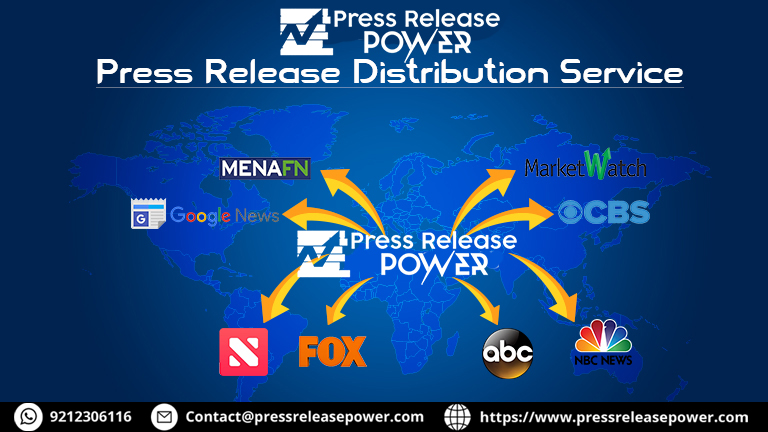In today’s digital landscape, growing your social media following and maximizing the reach of your content are crucial for achieving success. One of the most effective strategies to achieve these goals is content repurposing. By transforming existing content into different formats and distributing it across multiple channels, you can significantly increase your reach and engagement. Here’s a comprehensive guide on how to use content repurposing to scale your following from 180k to 1.2M.
Definition of Content Repurposing
Content repurposing involves taking existing content and adapting it into various formats to reach different audiences and extend its lifespan. This approach maximizes the value of your content by presenting it in new ways, thus increasing its impact and efficiency.
Benefits:
- Increased Reach: Different formats appeal to different audiences.
- Enhanced Engagement: Fresh content formats can boost interaction.
- Time Efficiency: Saves time compared to creating new content from scratch.
Objectives of the Strategy
The main objectives of this content repurposing strategy are:
- Increase Followers: Expand your audience base.
- Enhance Engagement: Boost interaction with your content.
- Maximize Content Value: Get the most out of your existing content.
Assess Your Existing Content
Identify High-Performing Content
Start by evaluating your current content to identify which pieces have performed the best. Look for content that has:
- High Engagement: Posts with significant likes, shares, and comments.
- Strong Reach: Content that has reached a large audience.
Tools: Utilize analytics tools such as Google Analytics, social media insights, and content management systems to track performance.
Categorize Content Types
Organize your content into categories based on type, such as:
- Blog Posts: Articles, how-to guides, case studies.
- Videos: Tutorials, interviews, vlogs.
- Infographics: Data visualizations, educational graphics.
- Podcasts: Interviews, discussions, expert opinions.
Understanding which types of content resonate most with your audience will help you decide how to repurpose them effectively.
Develop a Repurposing Plan
Create a Content Inventory
Compile a comprehensive list of your existing content. Include details such as:
- Content Type: Blog posts, videos, etc.
- Performance Metrics: Engagement rates, reach, and conversions.
- Relevance: How current and applicable the content is.
Purpose: This inventory will serve as a foundation for planning how to repurpose each piece.
Establish Repurposing Goals
Define what you want to achieve with your repurposed content. Goals might include:
- Reaching New Audiences: Expanding your reach by adapting content for different platforms.
- Boosting Engagement: Increasing interaction through fresh content formats.
- Generating Leads: Using content to attract potential customers.
Plan Content Formats and Channels
Determine the formats and channels for your repurposed content:
- Formats: Articles, social media posts, videos, infographics.
- Channels: Your website, social media platforms, email newsletters.
Planning this out will help ensure that your content reaches its maximum potential.
Repurposing Techniques
Transform Blog Posts into Other Formats
Convert your popular blog posts into various formats:
- Infographics: Visualize key points and data from your blog posts.
- Videos: Create video summaries or detailed discussions of your blog content.
- Slideshows: Turn blog content into slide presentations for sharing on platforms like SlideShare.
Example: If a blog post about “10 Tips for Better Time Management” performs well, create an infographic summarizing the tips and a video explaining them in detail.
Convert Podcasts and Webinars
Extract valuable content from podcasts and webinars:
- Quotes and Highlights: Share memorable quotes or key insights on social media.
- Blog Posts: Write blog posts based on the main points or discussions.
- Video Content: Create short video clips or highlight reels from webinars.
Example: A podcast episode on “Effective Marketing Strategies” can be converted into a series of social media posts highlighting key takeaways.
Create Infographics from Data-Driven Content
Turn data and statistics into engaging infographics:
- Visualize Data: Use graphics to make complex data easily understandable.
- Design: Create eye-catching designs that align with your brand’s style.
Example: If you have a blog post with in-depth research on industry trends, create an infographic summarizing the key data points.
Use Social Media Snippets
Break down long-form content into digestible social media posts:
- Teasers: Share excerpts or highlights to drive traffic to the full content.
- Bite-Sized Posts: Create short, engaging posts based on different sections of your content.
Example: A comprehensive guide on “How to Optimize Your SEO” can be broken into multiple social media posts, each focusing on a specific tip or strategy.
Optimize Content for Different Platforms
Tailor Content to Platform Specifications
Adapt your content to fit the specific formats and requirements of different platforms:
- Instagram: Use visually appealing images and short videos.
- Twitter: Create concise, impactful tweets and threads.
- LinkedIn: Share professional insights and in-depth articles.
Example: A detailed blog post might be transformed into a series of engaging Instagram Stories or a LinkedIn article.
Implement SEO Best Practices
Optimize your repurposed content for search engines:
- Keywords: Incorporate relevant keywords for better visibility.
- Meta Descriptions: Write compelling meta descriptions to improve click-through rates.
Example: An infographic repurposed from a blog post should include optimized alt text and descriptions to enhance SEO.
Schedule and Distribute Repurposed Content
Develop a Content Distribution Plan
Create a content calendar to manage the timing and frequency of your repurposed content:
- Scheduling: Plan when and where to publish each piece.
- Frequency: Determine how often to share repurposed content to maintain engagement.
Example: Schedule a series of social media posts and email newsletters to coincide with the release of a new video based on a popular blog post.
Use Automation Tools
Leverage tools to streamline distribution:
- Scheduling Tools: Use platforms like Buffer, Hootsuite, or Later to schedule and manage posts.
- Performance Tracking: Monitor content performance and adjust strategies accordingly.
Example: Automate the posting of repurposed content across multiple social media platforms to reach a broader audience.
Engage and Analyze
Monitor Engagement and Performance
Track the performance of your repurposed content:
- Metrics: Monitor likes, shares, comments, and click-through rates.
- Tools: Use analytics tools to assess how well your content is performing.
Example: Analyze which repurposed formats (e.g., infographics vs. videos) generate the most engagement and adjust your strategy accordingly.
Gather Feedback and Iterate
Collect feedback from your audience and use it to refine your approach:
- Feedback Channels: Use surveys, comments, and direct feedback to understand audience preferences.
- Adjustments: Modify your repurposing strategy based on what resonates best with your audience.
Example: If feedback indicates that your audience prefers video content over infographics, shift focus to producing more videos.
Case Studies and Examples
Analyze Successful Repurposing Campaigns
Review case studies of successful content repurposing:
- Examples: Study brands that have effectively scaled their following through repurposing.
- Lessons Learned: Identify strategies and techniques that contributed to their success.
Example: Analyze how a leading brand used content repurposing to grow their social media following, and apply similar tactics to your own strategy.
Apply Best Practices
Incorporate best practices from successful case studies into your own strategy:
- Tips: Adapt strategies that align with your brand and audience.
- Implementation: Use insights to refine your content repurposing efforts.
Example: If a case study highlights the effectiveness of using infographics for social media, consider incorporating more visual content into your strategy.
Recap of Key Strategies
To effectively grow your following from 180k to 1.2M:
- Optimize Existing Content: Identify high-performing content and repurpose it across different formats and platforms.
- Tailor Content for Platforms: Adapt content to fit the specific requirements of each platform.
- Monitor and Iterate: Track performance, gather feedback, and refine your approach.
Encouragement to Experiment and Optimize
Experiment with different content formats and strategies to find what works best for your audience. Continuous optimization will help you maximize the impact of your content repurposing efforts.
Future Trends in Content Repurposing
Stay updated on emerging trends and technologies in content repurposing to maintain a competitive edge. Innovations in content creation and distribution can offer new opportunities for reaching and engaging your audience.
Additional Resources
- Tools and Platforms for Content Repurposing: Explore tools like Canva, Adobe Spark, and Google Analytics for creating and managing repurposed content.
- Guides and Tutorials: Access additional reading materials and tutorials for deeper insights into content repurposing strategies.
- Community and Support: Connect with other content creators and marketers through forums and social media groups for support and advice.
By implementing these strategies, you can effectively repurpose your content to drive significant growth in your following, enhance engagement, and maximize the value of your content.

.jpg)
.jpg)





 English (US) ·
English (US) ·